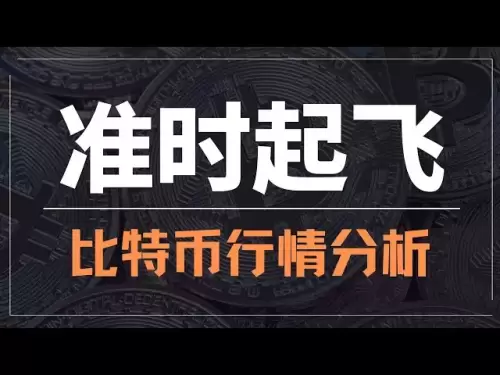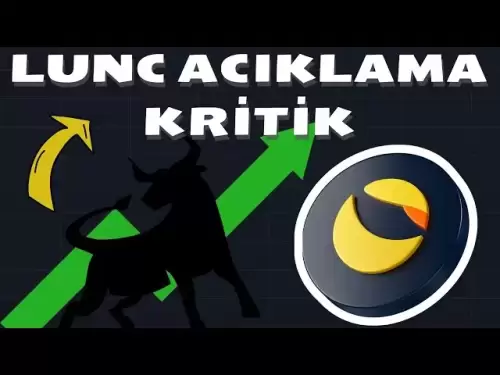-
 Bitcoin
Bitcoin $117300
1.93% -
 Ethereum
Ethereum $3866
5.21% -
 XRP
XRP $3.109
3.81% -
 Tether USDt
Tether USDt $1.000
0.01% -
 BNB
BNB $781.5
1.52% -
 Solana
Solana $173.0
2.95% -
 USDC
USDC $0.9998
0.00% -
 Dogecoin
Dogecoin $0.2181
6.31% -
 TRON
TRON $0.3403
0.93% -
 Cardano
Cardano $0.7683
3.91% -
 Hyperliquid
Hyperliquid $40.08
5.09% -
 Sui
Sui $3.742
7.38% -
 Stellar
Stellar $0.4152
4.69% -
 Chainlink
Chainlink $18.40
10.03% -
 Bitcoin Cash
Bitcoin Cash $580.6
2.21% -
 Hedera
Hedera $0.2543
4.25% -
 Ethena USDe
Ethena USDe $1.001
-0.01% -
 Avalanche
Avalanche $22.94
3.52% -
 Litecoin
Litecoin $121.8
2.24% -
 UNUS SED LEO
UNUS SED LEO $8.955
-0.41% -
 Toncoin
Toncoin $3.330
3.03% -
 Shiba Inu
Shiba Inu $0.00001270
2.97% -
 Uniswap
Uniswap $10.34
6.42% -
 Polkadot
Polkadot $3.805
3.86% -
 Dai
Dai $1.000
0.01% -
 Bitget Token
Bitget Token $4.429
1.80% -
 Cronos
Cronos $0.1495
4.65% -
 Monero
Monero $255.6
-9.08% -
 Pepe
Pepe $0.00001096
4.40% -
 Aave
Aave $282.9
7.85%
When is the best time to buy and sell ADA?
To buy and sell Cardano (ADA) effectively, understand market cycles, use technical indicators like RSI and moving averages, and consider fundamental factors like development updates and regulatory news.
Apr 18, 2025 at 11:28 pm

When considering the best times to buy and sell Cardano (ADA), it's important to understand that cryptocurrency markets are highly volatile and influenced by a myriad of factors. This article will delve into various strategies and indicators that can help you determine optimal entry and exit points for ADA. Keep in mind that no strategy guarantees success, and all investments carry risk.
Understanding Market Trends and Cycles
Market trends and cycles are crucial in determining the best times to buy and sell ADA. Cryptocurrency markets often move in cycles, characterized by periods of growth (bull markets) and decline (bear markets). By identifying these cycles, you can better time your trades.
Bull Markets: These are periods where the price of ADA is generally rising. Buying during the early stages of a bull market can be advantageous as you can potentially benefit from price increases. Look for signs such as increased trading volume, positive news about Cardano, and overall market optimism.
Bear Markets: These are periods where the price of ADA is generally falling. Selling before a bear market or during its early stages can help you minimize losses. Indicators of a bear market might include declining trading volume, negative news, and a general sense of pessimism in the market.
Technical Analysis Indicators
Technical analysis involves studying historical price data and using various indicators to predict future price movements. Some popular indicators for timing ADA trades include:
Moving Averages: These can help smooth out price data to identify trends. For instance, when a short-term moving average crosses above a long-term moving average (a "golden cross"), it might signal a good time to buy. Conversely, a "death cross" (short-term moving average crossing below a long-term moving average) could indicate a time to sell.
Relative Strength Index (RSI): This momentum oscillator measures the speed and change of price movements. An RSI above 70 might indicate that ADA is overbought and due for a price correction, suggesting a potential sell point. An RSI below 30 might indicate that ADA is oversold and could be a good time to buy.
Bollinger Bands: These can help identify periods of high and low volatility. When the price of ADA touches the upper Bollinger Band, it might be overbought, suggesting a sell. When it touches the lower band, it might be oversold, suggesting a buy.
Fundamental Analysis
Fundamental analysis involves evaluating the intrinsic value of ADA based on Cardano's underlying technology, development progress, and market position. Key factors to consider include:
Development Updates: Cardano frequently releases updates on its development progress. Positive updates, such as the successful implementation of new features or partnerships, can increase the value of ADA, making it a good time to buy.
Market Position: Cardano's position in the broader cryptocurrency market can influence its price. If Cardano is gaining market share or being adopted by more users and institutions, it might be a good time to buy.
Regulatory News: Changes in cryptocurrency regulations can significantly impact ADA's price. Positive regulatory news can be a good time to buy, while negative news might be a signal to sell.
Sentiment Analysis
Sentiment analysis involves gauging the overall mood of the market towards ADA. This can be done through various means:
Social Media and Forums: Platforms like Twitter, Reddit, and specialized cryptocurrency forums can provide insights into how the community feels about ADA. Positive sentiment can be a good time to buy, while negative sentiment might suggest a time to sell.
News and Media: Keeping an eye on news outlets and media coverage can help you understand the broader sentiment towards Cardano. Positive coverage can be a good time to buy, while negative coverage might be a signal to sell.
Using Trading Bots and Algorithms
Trading bots and algorithms can automate the process of buying and selling ADA based on predefined criteria. These tools can help you take advantage of market opportunities 24/7, which is particularly useful given the non-stop nature of cryptocurrency markets.
Setting Up a Trading Bot: To use a trading bot, you'll need to choose a reputable platform, set up an account, and configure your trading parameters. For instance, you might set the bot to buy ADA when the RSI drops below 30 and sell when it rises above 70.
Backtesting: Before using a bot in live trading, it's crucial to backtest your strategy using historical data. This can help you refine your parameters and increase the likelihood of success.
Monitoring and Adjusting: Even with automated trading, it's important to regularly monitor your bot's performance and adjust your strategy as needed. Market conditions can change, and what worked in the past might not work in the future.
Risk Management
Risk management is essential when trading ADA or any cryptocurrency. Here are some strategies to help manage your risk:
Diversification: Don't put all your funds into ADA. Diversifying your portfolio across different cryptocurrencies and asset classes can help mitigate risk.
Stop-Loss Orders: These can help limit your losses by automatically selling ADA if its price drops to a certain level. For example, if you buy ADA at $1.00, you might set a stop-loss order at $0.90 to limit your potential loss to 10%.
Position Sizing: Only invest a portion of your capital in any single trade. For instance, you might decide to never risk more than 2% of your total portfolio on a single ADA trade.
Frequently Asked Questions
Q: Can I use the same strategies for buying and selling other cryptocurrencies?
A: While many of the strategies discussed can be applied to other cryptocurrencies, it's important to consider the unique characteristics and market dynamics of each cryptocurrency. For instance, Bitcoin might react differently to certain indicators than ADA due to its larger market cap and different use cases.
Q: How often should I check the market to make informed decisions about ADA?
A: The frequency of market checks depends on your trading strategy. Day traders might need to monitor the market continuously, while long-term investors might only need to check weekly or monthly updates. However, staying informed about significant news and developments is always beneficial.
Q: Are there any tools or platforms specifically designed for ADA trading?
A: Yes, several platforms cater specifically to Cardano trading. For instance, Binance and Kraken offer ADA trading pairs and advanced trading tools. Additionally, there are specialized platforms like Daedalus and Yoroi, which are Cardano's official wallets and can be used for trading and staking ADA.
Q: How does staking ADA affect my buying and selling decisions?
A: Staking ADA can provide additional rewards, which might influence your decision to hold rather than sell. However, staking also means locking up your ADA for a period, which could limit your ability to sell quickly if the market turns against you. Consider the staking rewards against potential market movements when making your decisions.
Disclaimer:info@kdj.com
The information provided is not trading advice. kdj.com does not assume any responsibility for any investments made based on the information provided in this article. Cryptocurrencies are highly volatile and it is highly recommended that you invest with caution after thorough research!
If you believe that the content used on this website infringes your copyright, please contact us immediately (info@kdj.com) and we will delete it promptly.
- Bitcoin Reserve, Gold Revaluation, Congress Considers: A New Era for US Financial Strategy?
- 2025-08-08 04:30:12
- KAITO's Momentum: Can It Reclaim Support Amidst Social Media Scrutiny?
- 2025-08-08 04:30:12
- Pi Coin's dApp and AI Potential: Building a Decentralized Future
- 2025-08-08 02:30:12
- Ruvi AI Takes the Lead: Outshining Dogecoin on CoinMarketCap
- 2025-08-08 02:50:12
- Cryptos Under $1: Is Ripple Still the King?
- 2025-08-08 03:50:12
- Cold Wallet, Bonk Price, ICP Price: Navigating the Crypto Landscape in 2025
- 2025-08-08 03:56:12
Related knowledge

How to avoid common crypto investment mistakes?
Jul 13,2025 at 01:35am
Understanding the Risks of Crypto InvestmentInvesting in cryptocurrency can be highly rewarding, but it also comes with significant risks. One of the ...

What is a long-short crypto strategy?
Jul 15,2025 at 10:56am
Understanding the Basics of a Long-Short Crypto StrategyA long-short crypto strategy is an investment approach where traders simultaneously take long ...

What is a long-short crypto strategy?
Jul 11,2025 at 01:28pm
Understanding the Basics of Long-Short Crypto StrategyA long-short crypto strategy is an investment approach where traders take both long and short po...

How to use the RSI indicator for crypto?
Jul 12,2025 at 03:56pm
Understanding the RSI Indicator in Cryptocurrency TradingThe Relative Strength Index (RSI) is a momentum oscillator used to measure the speed and chan...

Is copy trading a good strategy for crypto beginners?
Jul 12,2025 at 08:28am
Understanding Copy Trading in the Cryptocurrency MarketCopy trading is a strategy where novice traders replicate the trades of experienced investors a...

How to build a crypto portfolio with $1000?
Jul 13,2025 at 08:14pm
Understanding the Basics of Cryptocurrency InvestmentBuilding a crypto portfolio with $1000 starts with understanding the fundamentals of cryptocurren...

How to avoid common crypto investment mistakes?
Jul 13,2025 at 01:35am
Understanding the Risks of Crypto InvestmentInvesting in cryptocurrency can be highly rewarding, but it also comes with significant risks. One of the ...

What is a long-short crypto strategy?
Jul 15,2025 at 10:56am
Understanding the Basics of a Long-Short Crypto StrategyA long-short crypto strategy is an investment approach where traders simultaneously take long ...

What is a long-short crypto strategy?
Jul 11,2025 at 01:28pm
Understanding the Basics of Long-Short Crypto StrategyA long-short crypto strategy is an investment approach where traders take both long and short po...

How to use the RSI indicator for crypto?
Jul 12,2025 at 03:56pm
Understanding the RSI Indicator in Cryptocurrency TradingThe Relative Strength Index (RSI) is a momentum oscillator used to measure the speed and chan...

Is copy trading a good strategy for crypto beginners?
Jul 12,2025 at 08:28am
Understanding Copy Trading in the Cryptocurrency MarketCopy trading is a strategy where novice traders replicate the trades of experienced investors a...

How to build a crypto portfolio with $1000?
Jul 13,2025 at 08:14pm
Understanding the Basics of Cryptocurrency InvestmentBuilding a crypto portfolio with $1000 starts with understanding the fundamentals of cryptocurren...
See all articles

























































































